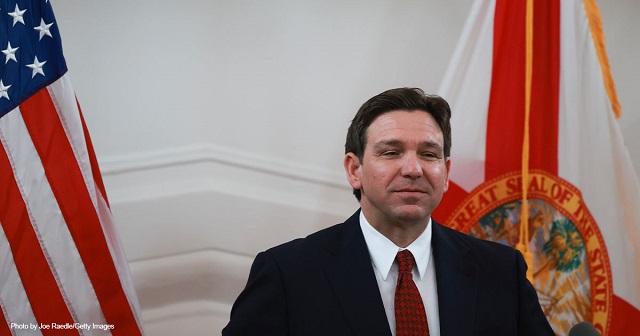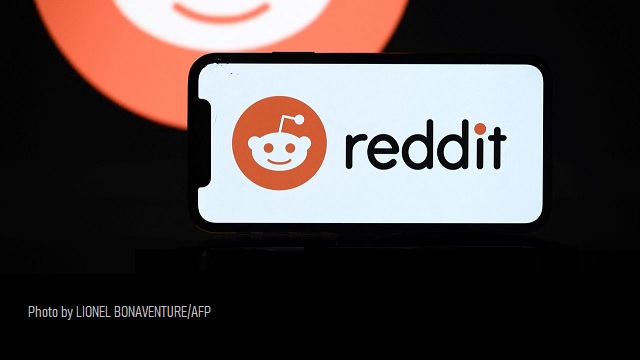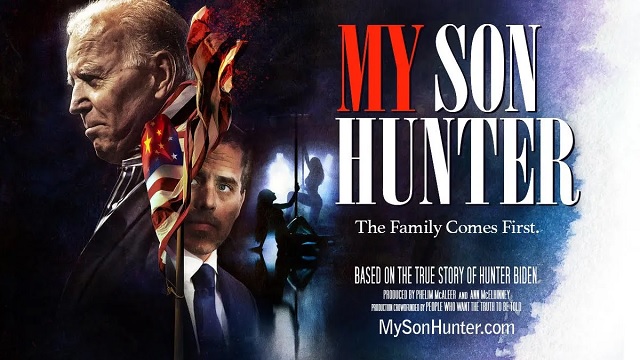
“Even the AP is acknowledging that there is deception” in modern media, said Family Research Council President Tony Perkins, host of “Washington Watch,” on Wednesday. Perkins referenced an Associated Press headline published on January 31, which read, “Grave peril of digital conspiracy theories: ‘What happens when no one believes anything anymore?’” That’s “a very profound question,” said Perkins, but he added that the AP failed to “get to the real problem and the source or the solution.”
The nearly 3,000-word article “focused on bloggers and others using the internet” to spread or adopt conspiracy theories, said Perkins. With a predictable skew toward right-fringe conspiracy theories, the article featured everything from QAnon and 2020 election claims, to government complicity in the Maui wildfires and the Sandy Hook school shooting.
On one hand, technology is a tool that cuts both ways, Perkins acknowledged. “Today’s technology … has benefits such as allowing you to watch or listen to ‘Washington Watch’ on a device you carry in your pocket. It also allows the false prophets to amplify their message with what today we might call conspiracy theories or fake news,” he said. David Closson, director of FRC’s Center for Biblical Worldview concurred. “Someone can fire something off on social media and it can make it around the world … before there’s even a chance to do a fact check.”
On the other hand, “the legacy media is a part of this problem,” Perkins argued. “The reason [people are] susceptible” to conspiracy theories is “because [the legacy media] were the first ones that rejected truth and therefore set the stage for these conspiracy theories to prosper.” As the media becomes less trustworthy, they are shocked to find a corresponding decrease in people trusting the media.
“The media and journalists of all stripes really have had such a casual relationship with the truth,” agreed Closson, “or worse, … even suppressed legitimate news.” On some networks like CNN, he said he can’t even trust “the premise of some of their arguments when [in] the previous segment, you know, they’re using preferred pronouns.” At The New York Times, staffers complained internally that an article on detransitioners created “a hostile work environment for the queer people who work here.” Readers will surely recall their own encounters with mainstream media outlets choosing narrative over news.
People eschewing the legacy media for alternate sources of information represents an existential crisis to those outlets, and they have responded accordingly. Last month, a Washington Post analyst known for favoring false narratives over true ones concluded that ordinary Americans shouldn’t do their own research. Ironically, the study he relied upon actually demonstrated that the cottage industry of fact-checking has become so subjective that fact-checkers agree on what is disinformation less than half the time.
The AP article, which extended a multi-part series on the rising threat of conspiracy theories, noted with alarm that the increase in conspiracy theories corresponds to a decrease in authority, institutions, and the mainstream media. “And even when they fail to convince people,” they wrote, “the conspiracy theories embraced by these groups contribute to mounting distrust of authorities and democratic institutions, causing people to reject reliable sources of information while encouraging division and suspicion.”
“When you have a breakdown in authority … especially in media, … you sow the seeds on fertile ground for these conspiracy theories to thrive,” Closson warned. He pointed to a 2023 Gallup poll which, for 11 out of 16 public institutions they asked about, found “the lowest level of confidence that [the public has] had in 40 years.”
“We live in a time when people simply don’t trust institutions,” said Closson. “Nor should they, given where we are,” Perkins argued. “When you have people denying the revealed truth that is so fundamental — male and female, the institution of marriage … these people are not worthy to be trusted or followed.”
Closson pointed out that conspiracy theories and misinformation have been around for a long time, “really since the beginning of time,” beginning with the serpent in the garden. “Did God actually say, ‘You shall not eat of any tree in the garden’?” the serpent said to Eve (Genesis 3:1). There, the serpent challenged the truth of God’s Word, “sowing doubt, sowing confusion,” said Closson, and Adam and Eve swallowed the lie. “Ever since then, we’ve lived in some sort of a post-truth world.”
However, Closson added, conspiracy theories seem to be gaining more traction now because of America’s culture-wide rejection of truth. “Even in our churches, we’re not immune from these things,” he lamented. He cited research FRC commissioned in 2023 that found “48% of regular church goers say that they don’t believe in absolute moral truth, … a basic tenet of a biblical worldview.”
“Deception comes when we depart from truth,” Perkins responded. He cited Paul’s warning to the Thessalonians about the age of lawlessness, which would bring “all wicked deception for those who are perishing, because they refused to love the truth and so be saved. Therefore God sends them a strong delusion, so that they may believe what is false, in order that all may be condemned who did not believe the truth but had pleasure in unrighteousness” (2 Thessalonians 2:9-12). “We should take that as an indication that these latter days are going to be filled with deception,” said Perkins.
Perkins and Closson identified four ways that Christians should respond to the epidemic of deception poisoning America’s media, public discourse, and even the church. In a refreshing contrast to America’s prevailing buffet of lies, they served up courses of hearty, wholesome truth — all of which were grounded in God’s infallible Word.
1. Don’t Be Led Astray
The Olivet Discourse (Matthew 24-25) opened with Jesus’s disciples asking him to teach them about “the sign of your coming and of the end of the age” (Matthew 24:3). Jesus answered, “See that no one leads you astray. For many will come in my name, saying, ‘I am the Christ,’ and they will lead many astray” (Matthew 24:4-5). Paul, having learned from Jesus, later issued similar instructions to the Thessalonians, “Let no one deceive you in any way” (2 Thessalonians 2:3). In other words, the latter times would feature many anti-Christ deceivers peddling counterfeit gospels, and Jesus wanted his followers to be on their guard.
These instructions from our Lord were the “first words out of his mouth,” Perkins noted, after quoting the passage. “You see, Jesus warns his followers to be on guard against deception and those who will peddle deception. … So, repeatedly he says, ‘Don’t be deceived.’”
Jesus had already warned his followers against deception. “Beware of false prophets, who come to you in sheep’s clothing but inwardly are ravenous wolves,” said Jesus in the Sermon on the Mount (Matthew 7:15). Closson quoted these words and added that Jesus gave “a litmus test” by which to recognize false teachers: “You will recognize them by their fruits” (Matthew 7:16). He endorsed applying this litmus test to “the people reporting the news. Let’s recognize them by their fruit.”
In a culture of confusion and lies, Christian, don’t be led astray by false teachers.
2. Don’t Be Alarmed
Jesus proceeded to instruct his disciples, “See that you are not alarmed” (Matthew 24:6). Jesus foretold wars, calamities, persecutions — intense trials that could throw Christians off-balance. Nevertheless, Jesus instructed his followers that these things must happen, preparing them beforehand to remember that God is sovereign over all things.
Paul repeated this instruction, too. “Now concerning the coming of our Lord Jesus Christ and our being gathered together to him, we ask you, brothers, not to be quickly shaken in mind or alarmed, either by a spirit or a spoken word, or a letter seeming to be from us, to the effect that the day of the Lord has come” (2 Thessalonians 2:1-2).
“We should not be surprised,” said Perkins, who quoted from Matthew 24. “Jesus warned us over and over … that this was going to occur.”
3. Return to the Truth
Christians must also “go back to the truth,” as an antidote to the epidemic of deception, said Closson. “We need to stand on God’s word …, which is our ultimate source of truth” (see John 17:17). “All Scripture is breathed out by God and profitable for teaching, for reproof, for correction, and for training in righteousness, that the man of God may be complete, equipped for every good work” (2 Timothy 3:16-17).
“We should put our confidence in that which does not change,” Perkins agreed. He added, “Jesus Christ is the same yesterday, today, and forever [Hebrews 13:8]. The Word of God does not change.” Jesus also said this on the Mount of Olives, “Heaven and earth will pass away, but my words will not pass away.”
Perkins applied this truth to the moments in which we’re tempted to believe a lie, especially one that questions God’s Word (“Did God really say?”). Our response, he said, should be, “‘Well, wait a minute. Let me check. Let me go back to the source.’ … You go back to the source. That’s how you counter the deception.”
Perkins argued that American Christians should use their access to the source of truth to counter the deception of the evil one in the public square. “We have the ability, here in the United States, to use the freedoms that we still have to advocate for others. We have the ability to expose these things that are occurring in the end times that Jesus warned about,” he said. “He said they were coming, I think, to prepare us so that we could stand against the evil.” Invoking Matthew 24:12, “Because lawlessness will be increased, the love of many will grow cold,” Perkins urged, “We have to act on legitimate information we have, so that we can be the salt and light that allows the gospel to go forth.”
4. Use Discernment
Countering error with truth is not always simple, which is “why we need discernment,” said Closson, “today more than we have ever needed it.” When Jesus first sent his disciples out into the world, he told them to “be wise as serpents and innocent as doves” (Matthew 10:16), he quoted. Additionally, Jesus quoted the greatest commandment in the law, “You shall love the Lord your God with all your heart and with all your soul and with all your mind” (Matthew 22:37).
Using discernment is easier said than done, but Perkins and Closson discussed several helpful tips for evaluating the news:
A. Pause and Pray
“The first step that I would take when I see something on the social media or the news, is just take a pause,” said Closson. “There’s the impulse that we like to know everything at once. In a social media age, we’re used to getting our news instantaneously. And so I think we need to slow down. We need to pray.”
“You don’t have to be the first one to pass [a news article] on,” Perkins concurred. Because here’s what happens when you do that. Most of these [conspiracy theories] are exposed within time. If you’re associated with that, you lose credibility among your friends.”
So, counseled Perkins, “Resist this temptation to forward it on or to post it or embrace it. … Pray over it. Just have discernment.”
B. Read Critically
Second, “Don’t believe anything you see just because you see it in print,” said Closson. Perkins put the same concept in different words, “Be careful what you read online. Be careful about just forwarding something on” without considering first if it’s true.
As part of this step, Christians should compare what they read in the news to what the Bible says, Perkins advised.
In the same discourse, Jesus predicted, “For nation will rise against nation, and kingdom against kingdom, and there will be famines and earthquakes in various places. … Then they will deliver you up to tribulation and put you to death, and you will be hated by all nations for my name’s sake. … And many false prophets will arise and lead many astray” (Matthew 24:7, 9, 11).
“When you hear those things happening,” we know that “the Scripture says, ‘Yeah, those things are going to happen,’” said Perkins. “So, we can say, ‘Well, all right, this lines up with what Jesus said was going to be happening. Let’s go the next step and validate and verify the source.’”
C. Corroborate Information
“It’s always good to corroborate. If you see something on social media, don’t just assume it’s true,” Closson said. “Don’t forward the email to a friend. Don’t forward the post, but corroborate it. Go to some valid news organizations.”
Closson recommended Family Research Council’s own news organization, The Washington Stand, noting that it has “a whole team of reporters” dedicated to “coming at [the news] from a biblical worldview.” This means that they are “trying to connect it to Scripture, trying to connect it to facts, objective truth, things that are reportable, things that can be verified.”
Perkins suggested a “rule of thumb” that “anything you see that is detached from a specific, reliable news or organizational site like The Washington Stand, … don’t trust it if it’s not connected to a site that it can be verified.”
One way to find reliable news is to “get as close to the source as you can,” said Perkins. “That’s why we bring you the actual news makers. We go right to the source. We’re not, you know, reporting on what someone else said.” That’s one reason why social media is an unreliable place to peruse the news; it’s far removed from the source.
D. Be Honest
Everyone is liable to make mistakes. This is even easier in a rapidly changing news environment, where first reports often turn out to be wrong, misleading, or at least lacking critical information. The question is, how do we respond when we make mistakes?
Perkins exhorted “Washington Watch” listeners to be honest. “I do my very best to make sure that everything we say here is validated and it’s true,” he said. “And, if we do get something wrong, I’m going to take ownership of that, and I’m going to correct it when we find out.”
“So,” Closson summarized, “prayer, discernment, corroborating objectivity — all of these things, I think, ought to mark a Christian as they take in, read, understand, and share the news.” Christians should speak the truth in love, which means we should not be led astray or alarmed, but stand firm on the Word of God, the only infallible source of truth. To accurately handle the Word of truth amid a culture of deception, Christians must navigate with all discernment, never losing sight of him who is “the way, and the truth, and the life” (John 14:6).
AUTHOR
Joshua Arnold is a senior writer at The Washington Stand.
EDITORS NOTE: This Washington Stand column is republished with permission. All rights reserved. ©2024 Family Research Council.
The Washington Stand is Family Research Council’s outlet for news and commentary from a biblical worldview. The Washington Stand is based in Washington, D.C. and is published by FRC, whose mission is to advance faith, family, and freedom in public policy and the culture from a biblical worldview. We invite you to stand with us by partnering with FRC.















